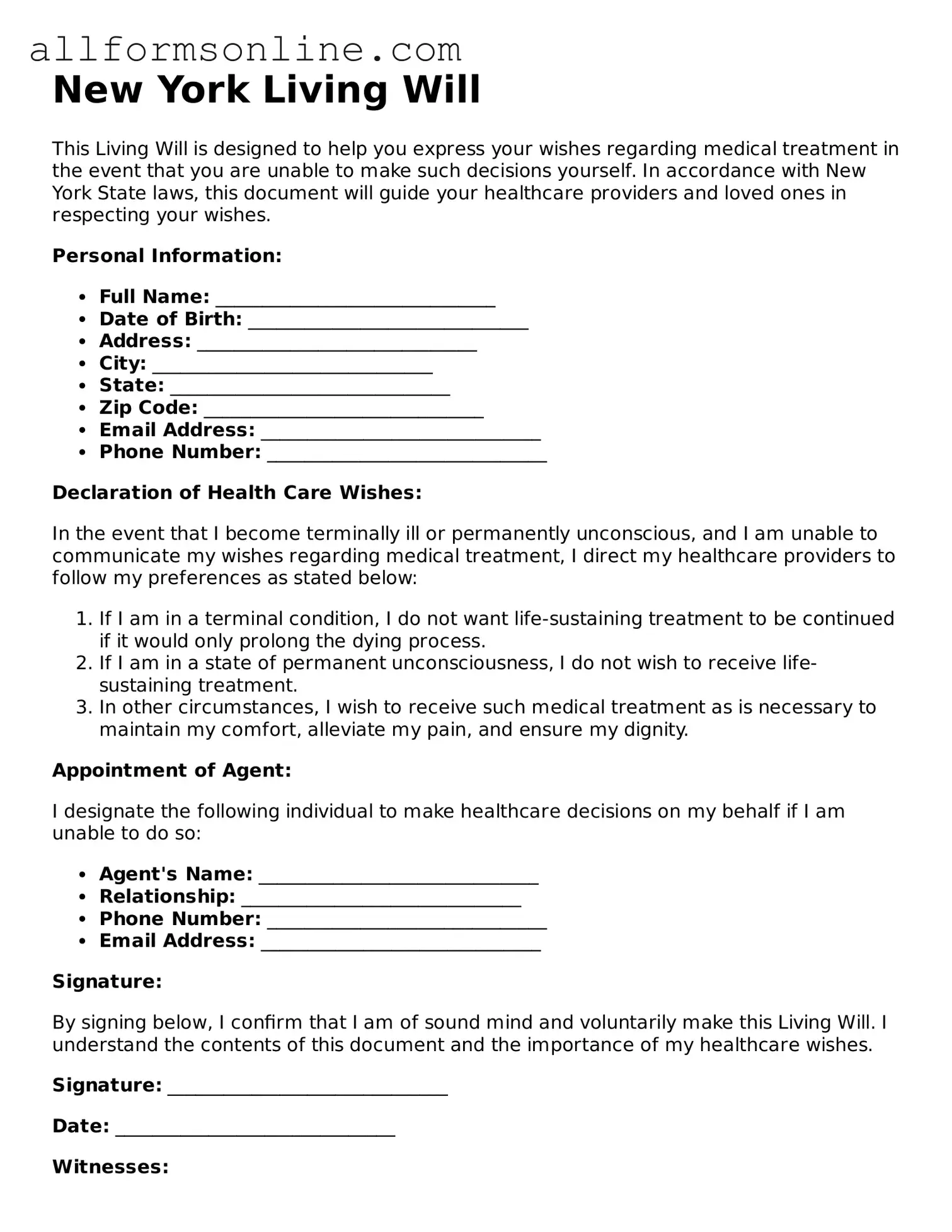What is a Living Will in New York?
A Living Will is a legal document that allows you to express your wishes regarding medical treatment in the event that you become unable to communicate those wishes yourself. It typically outlines the types of medical interventions you do or do not want, particularly in situations where you are terminally ill or in a persistent vegetative state. By creating a Living Will, you ensure that your preferences are known and respected, relieving your loved ones from the burden of making difficult decisions during emotional times.
How do I create a Living Will in New York?
Creating a Living Will in New York is a straightforward process. You can either draft one yourself or use a template provided by legal services or healthcare organizations. It’s important to clearly state your medical preferences and ensure that the document is signed and dated. While New York does not require witnesses or notarization for a Living Will, having them can add an extra layer of validation. After completing the document, share copies with your healthcare providers and family members to make sure everyone is aware of your wishes.
Can I change or revoke my Living Will once it’s created?
Yes, you can change or revoke your Living Will at any time, as long as you are mentally competent to do so. If you decide to make changes, it’s essential to create a new document that clearly states your updated wishes. Additionally, inform your healthcare providers and family members about the changes to avoid any confusion. If you want to revoke your Living Will, simply destroy the document and communicate your decision to those who have a copy.
Is a Living Will the same as a Health Care Proxy?
No, a Living Will and a Health Care Proxy are different documents, although they both deal with medical decisions. A Living Will specifies your wishes regarding medical treatment, while a Health Care Proxy allows you to appoint someone to make healthcare decisions on your behalf if you are unable to do so. You can have both documents in place to ensure that your medical preferences are honored and that someone you trust is making decisions for you when necessary.
